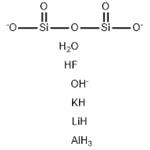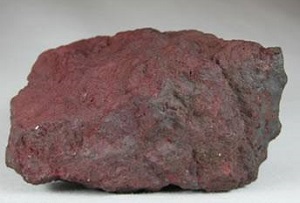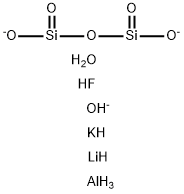Geologic Occurrence and uses of Lepidolite
Dec 4,2019
Lepidolite is the name of a rare lithium-rich mica mineral that is usually pink, red, or purple in color. It is the most common lithium-bearing mineral and serves as a minor ore of lithium metal, with rubidium and cesium sometimes being byproducts. When impregnated with quartz, lepidolite is used as a minor gemstone. Flakes of lepidolite are sometimes responsible for the color of pink and red aventurine.
Geologic Occurrence
Lepidolite can only form in geochemical environments where high concentrations of lithium are available for mineral formation. Lepidolite is a rare mineral because these geochemical situations rarely occur.
The lithium ion is very small, and it does not readily substitute in other minerals. As a result, it is usually one of the last ions to form minerals during the crystallization of a subsurface magma. As other ions are depleted, the residual fluids of magma crystallization become progressively enriched with lithium.
During the final stages of crystallization, there might finally be a high enough concentration of lithium present to form discrete lithium minerals such as spodumene, lepidolite, and petalite. Elbaite tourmaline is another lithium-bearing mineral that forms in association with lepidolite and other lithium minerals.

Uses of Lepidolite
The most important use of lepidolite has been as a minor ore of lithium metal. This use was more important in the first half of the 1900s than it is today. Today most lithium is produced from brine and evaporite deposits in South America, where lithium can be extracted more economically.
Small amounts of rubidium sometimes substitute for lithium in the lepidolite crystal lattice. When present, the rubidium can be recovered as a byproduct during the extraction of lithium. Lepidolite and pollucite, another lithium mineral that can contain significant amounts of cesium, often occur together. These minerals can be mined for lithium with cesium as a byproduct.
Lepidolite is sometimes used as a source of flake mica. It is also used to make glass and as an ingredient in some enamels. Lepidolite can be used as an ornamental stone and is an important constituent in some gem materials.
Lepidolite As a Gem Material
Lepidolite as a mineral lacks the hardness and tenacity to be a good gem material. However, it is sometimes impregnated with quartz, and that gives it durability. Lepidolite impregnated with quartz makes an attractive pink to purple gemstone, but what makes these stones even more desirable are the bright flashes that occur when the mica cleavage surfaces reflect light. This material is used to produce cabochons, beads, tumbled stones, and ornamental items. They are usually sold as “lepidolite” without giving the quartz proper credit for its important job.
Lepidolite is also an important ingredient in the quartz gem known as “aventurine”. The aventurescence and color of pink, red, and purple aventurine is often caused by the presence of tiny flakes of lepidolite within the quartz. Just a few weight percent of lepidolite flakes can be enough to impart a distinct color in aventurine.
- Related articles
- Related Qustion
Hematite is one of the most abundant minerals on Earth's surface and in the shallow crust. It is an iron oxide with a chemical composition of Fe2O3.....
Dec 4,2019Inorganic chemistry2,4-Dichloro-thieno[3,2-d] pyrimidine is one of the active intermediates that is a must for new antitumor medications. There are two chloride atoms in this compound that are easy for other functional groups to replace bringing various unit....
Dec 5,2019Drug Intermediatelepidolite
1317-64-2You may like
- lepidolite
-

- $0.00 / 1KG
- 2024-09-04
- CAS:1317-64-2
- Min. Order: 1KG
- Purity: 99.0%
- Supply Ability: 10000KG






